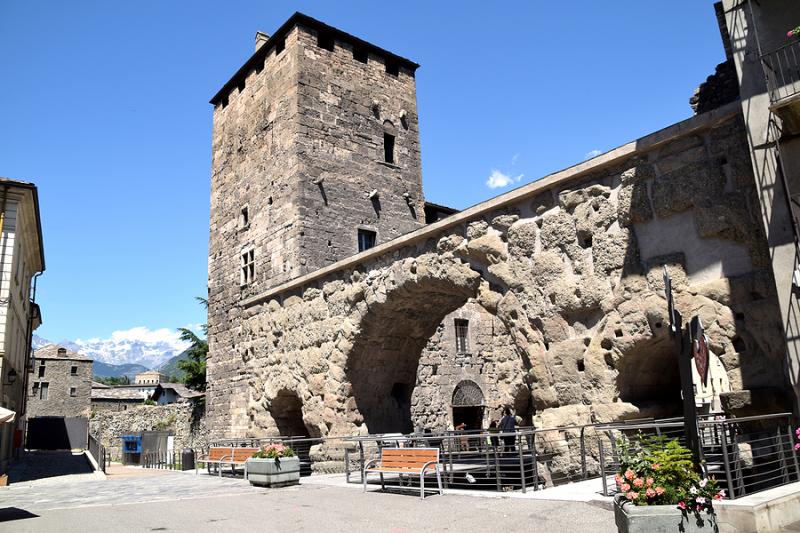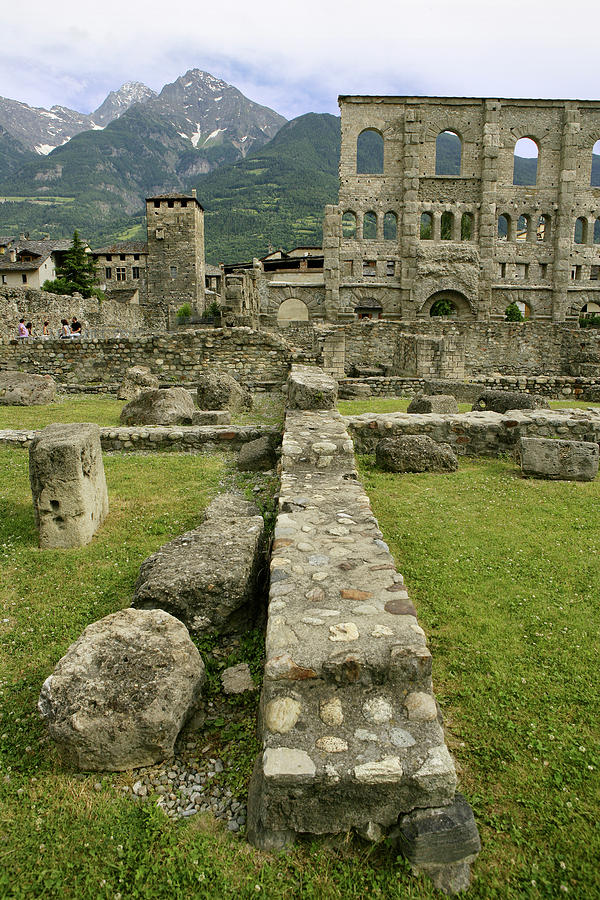Aosta's Roman Architecture Highlights
Share
Nestled in the heart of the Italian Alps, Aosta is a city that boasts a rich tapestry of history, particularly its remarkable Roman architecture. As you wander through its charming streets, you'll encounter a plethora of ancient structures that tell the story of a time when this region was a vital part of the Roman Empire. This article will guide you through the highlights of Aosta's Roman architecture, ensuring that your visit is filled with awe-inspiring sights and historical insights.

A Brief History of Aosta
Aosta, known as "Augusta Praetoria Salassorum" during Roman times, was founded in 25 BC by Emperor Augustus. Its strategic location made it a crucial military outpost and a hub for trade and communication between Italy and Gaul. The remnants of this glorious past are still visible today, making Aosta a must-visit destination for history enthusiasts.
Key Attractions of Roman Architecture in Aosta
1. The Roman Theatre
One of the most significant remnants of Aosta's Roman past is the Roman Theatre, built in the 1st century AD. This impressive structure could accommodate around 3,700 spectators and was used for various performances and events. The theatre's well-preserved ruins, including the stage and seating areas, provide a glimpse into the entertainment culture of ancient Rome.
/aosta-roman-56885b783df78ccc151ef31a.jpg)
2. The Arch of Augustus
Erected in 35 BC, the Arch of Augustus is a stunning triumphal arch that marks the entrance to the city. This monumental structure is adorned with intricate carvings and inscriptions that celebrate the achievements of Emperor Augustus. Standing beneath the arch, you can almost feel the weight of history as you imagine the grand processions that once passed through.
3. The Roman Walls
Surrounding the old town of Aosta, the Roman Walls are a testament to the city's fortifications. Built in the 3rd century AD, these walls were constructed using massive stone blocks and feature several towers and gates. Walking along the walls offers a unique perspective of the city and its ancient defenses.

4. The Cathedral of Aosta
While primarily a medieval structure, the Cathedral of Aosta incorporates elements from the Roman era. The original Romanesque church was built on the site of an earlier Roman temple, and its crypt contains remnants of Roman architecture. The cathedral's stunning façade and intricate interior make it a worthwhile stop on your architectural tour.
5. The Porta Praetoria
The Porta Praetoria is another significant Roman gate that once served as the main entrance to the city. Dating back to the 1st century AD, this gate features impressive stonework and provides insight into the engineering prowess of the Romans. Today, it stands as a symbol of Aosta's historical significance.
Best Time to Visit Aosta
The ideal time to visit Aosta is during the spring (April to June) and fall (September to October) months. During these periods, the weather is mild, making it perfect for exploring the city's outdoor attractions. Summer can be warm, while winter offers a picturesque snowy landscape, especially for those interested in skiing in the nearby mountains.
Weather Information
- Spring (April - June): Average temperatures range from 10°C to 20°C (50°F to 68°F). Expect occasional rain.
- Summer (July - August): Average temperatures can reach up to 30°C (86°F), with plenty of sunshine.
- Fall (September - October): Average temperatures range from 10°C to 20°C (50°F to 68°F). The fall foliage adds a beautiful backdrop to your visit.
- Winter (November - March): Average temperatures can drop to -5°C (23°F), with snowfall common, especially in the surrounding mountains.
Things to Do in Aosta
While Roman architecture is a highlight, Aosta offers a variety of activities for visitors. Here are some suggestions to enhance your trip:
- Visit the Aosta Archaeological Museum: This museum houses a collection of artifacts from the Roman period, providing further context to the structures you’ll see around the city.
- Explore the surrounding mountains: Aosta is a gateway to the stunning Gran Paradiso National Park, perfect for hiking and outdoor adventures.
- Enjoy local cuisine: Savor traditional dishes like polenta, fontina cheese, and local wines at one of Aosta's charming restaurants.
For more activities and insights, check out Things to Do in Aosta.
Booking Your Trip
Ready to experience the captivating Roman architecture of Aosta? Secure your accommodations and travel arrangements with ease. Here are some helpful links:
- Hotels & Flights: Book your stay and flights here.
- Transfers: Arrange your transfers.
Memorable Experiences Await
Aosta is not just a city; it’s a living museum that invites you to step back in time. From the grandeur of the Roman Theatre to the imposing Arch of Augustus, each site tells a story that connects you to the past. As you stroll through the cobbled streets, take a moment to appreciate the blend of history and modern life that defines this enchanting destination. Whether you're a history buff or simply looking for a unique travel experience, Aosta's Roman architecture is sure to leave a lasting impression.
So, pack your bags and prepare for an unforgettable adventure in the heart of the Alps!



